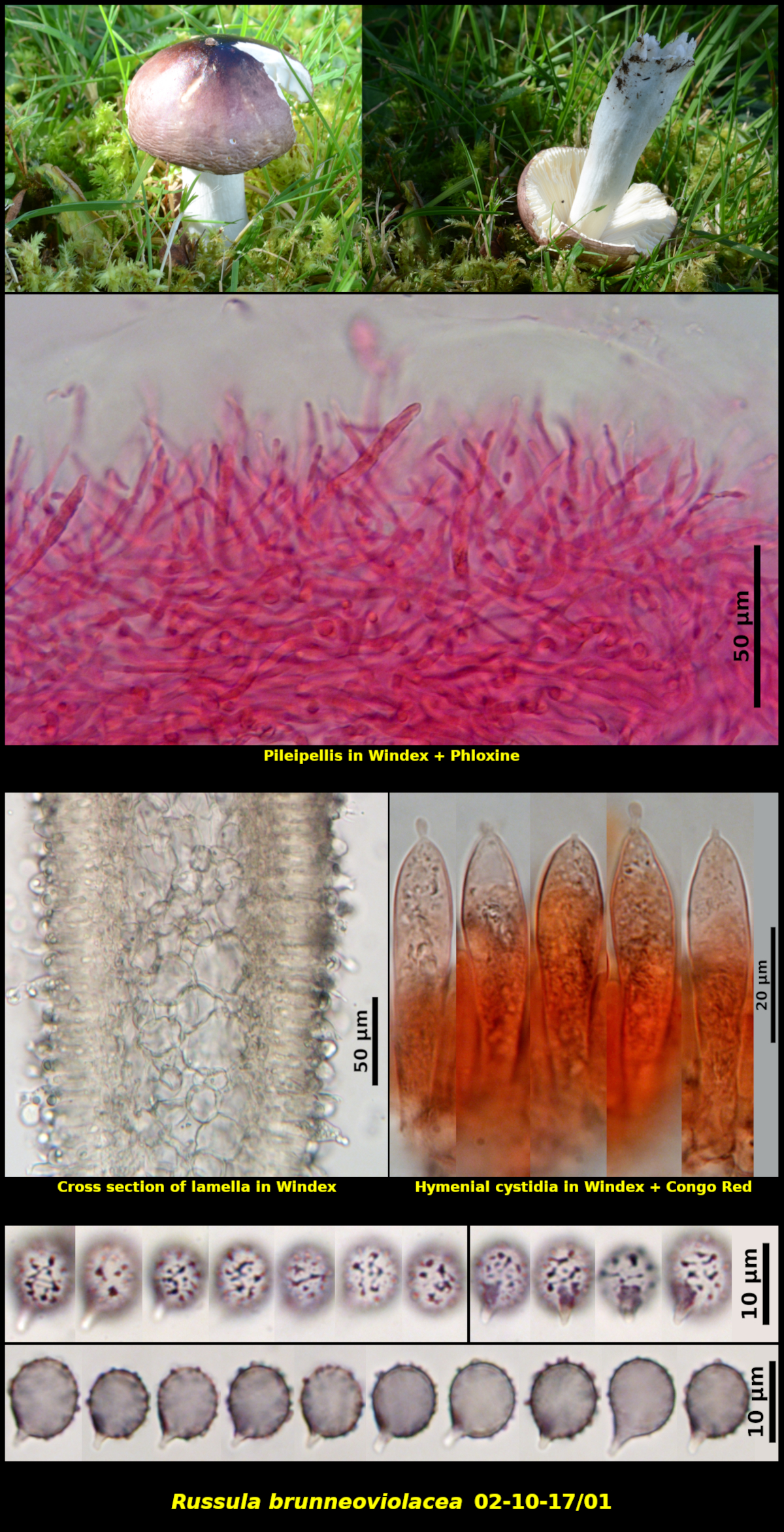Fleshy Fungi of New Brunswick >>
Russula brunneoviolacea
Russula brunneoviolacea Crawshay

Solitary in lawn in association with large Abies balsamea but with Betula cordifolia nearby, Little Lepreau, New Brunswick (02-10-17/01)
Pileus conic-convex, moist or possibly viscid (dry weather), shiny, glabrous, very dark purple (HSV230:60:20-30) in central parts, lighter purple (HSV230:50-70:40-50) elsewhere, with pileipellis peeling 2/3 of the way to the centre, 30-34 mm in diameter. Stipe equal or slightly clavate, brittle, stuffed, becoming hollow, white, glabrous, dry, 60 X 9 mm. Lamellae very pale yellow (HSV50:02-03:100), close to crowded, adnexed, not marginate. Flesh white, unchanging when cut, with a nondescript odour, mild.
Basidiospores pale orange yellow (HSV45:10-15:100) in spore print, broadly ellipsoidal, with coarse ornamentation up to 1.1 µm high and frequently connected by ridges but never forming a well-defined reticulum, with ornamentation strongly amyloid, with a large apiculus, 8.1-10.4 x 6.9-8.1 μm, Q = 1.15-1.31 (average[44]: 9.2 x 7.6 &mum, Q = 1.21) excluding the ornamentation. Hymenial cystidia scattered, clavate, with a slightly thickened wall, often mucronate, about 55-65 x 11-12 &mum. Basidia clavate, 4-spored. Pileipellis a nearly vertically-oriented ixotrichoderm above a slightly interwoven subpellis, readily separating from the tramal tissues in exciccates. Dermatocystidia abundant and arising among the hyphae of the trichoderm, narrowly clavate to cylidrical, nonseptate or at most with a single septum. Clamp connections lacking throughout.
Russula dissimulans is recognized by its purple pileus, white stipe and yellow spore print. Microscopically it is characterized by its pileipellis that forms a thick turf of hyphae within a gelatinous matrix. The basidiospores with their only very incomplete network of lines may also be diagnostic, although there seems to be some disagreement about this character.
Photograph: D. Malloch (02-10-17/01).